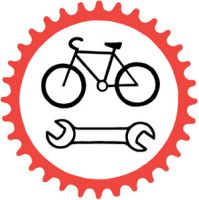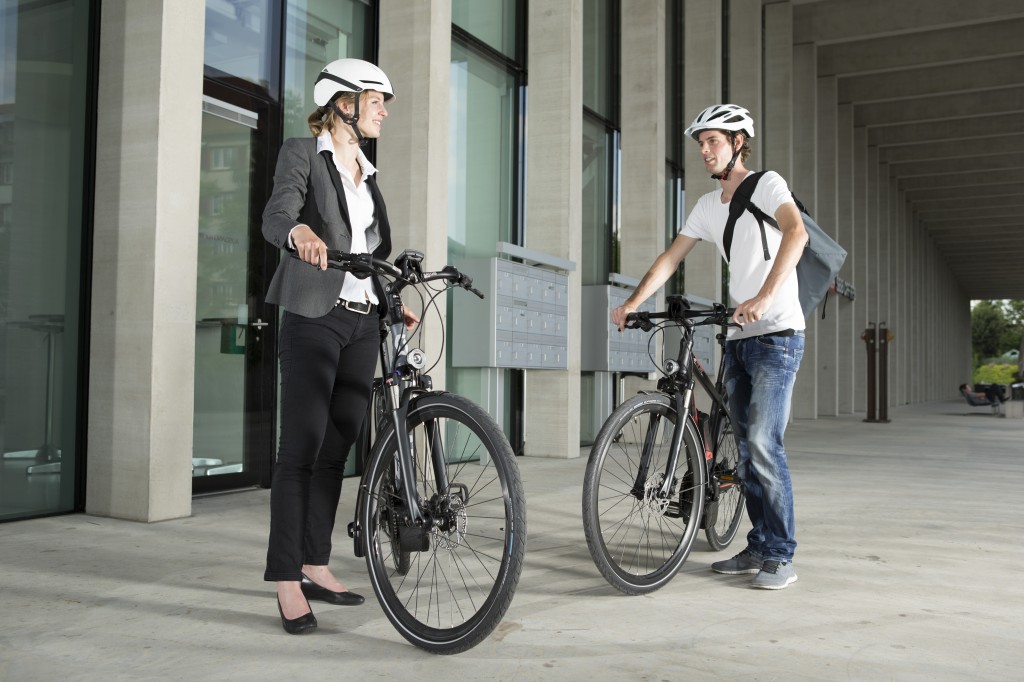This week, we’ve shared a little about what you’ll need to commute on your bike as well as how to do safely while obeying the rules of the road. Today, we’re going to take a closer look at bike maintenance, covering everything you need to know to keep your ride in tip top shape! Just follow the steps below, and you’ll enjoy miles and miles of hassle-free commuting.
Step 1: Safety Inspection
Visually inspecting your bike should be done before every ride and if time allows, upon your return home at the end of the day. Look for any damage such as cracks, abnormal wear, or unwanted debris. Spin the wheels – do they turn freely? Are they true with no wobbles? Next, check the tire pressure; even a loss of 5 psi results in decreased travel times and increased chances of flats! Now, check your brakes. Are they stopping your bike properly? How do your brake pads look? If they are getting thin, their stopping efficiency may be decreased. Lastly, make sure all bolts and components are secure with no loose play. While this may all sound like a lot, you’ll soon establish a routine and it only takes a minute or two to complete.
Step 2: Home Routine Maintenance
While it’s important to get regular shop tunes up on your bike, there are a few things that you should be doing at home to keep your bike running smoothly. The two most important things you should be doing are inflating your tires to the proper pressure and cleaning & lubing your chain. Investing in a floor pump is a great way to go for keeping your tires at their recommended psi rating, and will save you time and effort in the long run. For most bikes, checking your tire pressure weekly will do the trick.
Done less frequently but equally important, lubing your bike chain should be done every 200 miles or after the chain is exposed to rain. Cleaning of your chain should be done every 1,000 miles. How does one lube a chain you ask? Easy:
- Pedal backwards and clean off the dirty lube and gunk with a rag.
- Pedal backwards and spray or drip lube on each link.
- Depending on the lube, wait a few minutes and with a clean rag wipe off the excess. Just make sure you check the directions on your lube bottle, and you can’t go wrong. We swear by T-9 Boeshield as a chain lube and use it exclusively on all our bikes here at the shop.
Lastly, it wouldn’t be a bad idea to give your bike a bath every now and then. Commuter bikes take a lot of abuse day in and day out, so cleaning it every now and then is wise. Plus, washing your bike takes all of ten minutes, so there’s really no excuse to not do it. Grab yourself a bucket of hot, soapy water, a hose, a soft bristled brush, and a towel and you’re all set. Wet the bike down first, scrub from top to bottom leaving the greasy parts until last, then rinse. Be sure to use low pressure when spraying down the bike as high pressure hoses and sprayers can damage or remove grease in critical areas around the bike. Finally, when you’ve rinsed and dried your bike, lube your chain and voila!
Step 3 – Shop Maintenance
While some bike maintenance can be easily done at home, sometimes it’s best to leave the more technical stuff to a highly experienced bike mechanic. Just like cars, bikes need regular tunes and adjustments to keep them running day in and day out. At a minimum, bikes should receive a yearly full tune which includes a full safety inspection, cleaning & greasing of all moving parts, inspection of all cables and shifting components, and adjustments as needed. It’s a $45 service offered by our shop that really keeps your bike running at its best.
Have questions? Post them below and we’ll gladly get you an answer from Pete, our resident bike mechanic, who has been working on bikes for longer than a lot of our customers have been alive! He’s also a pro at bike commuting – he rides in to work year round regardless of the weather conditions – so ask away!






